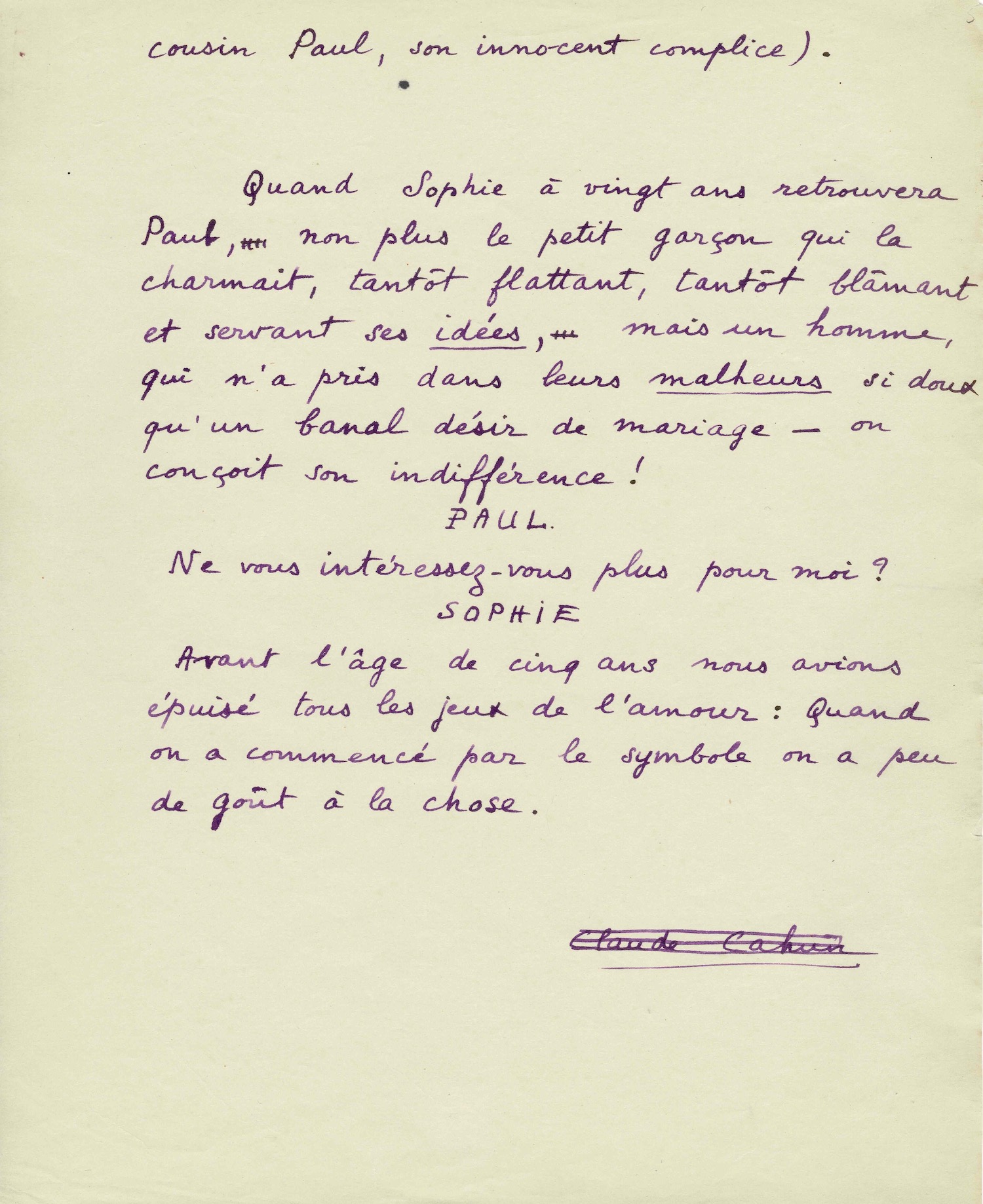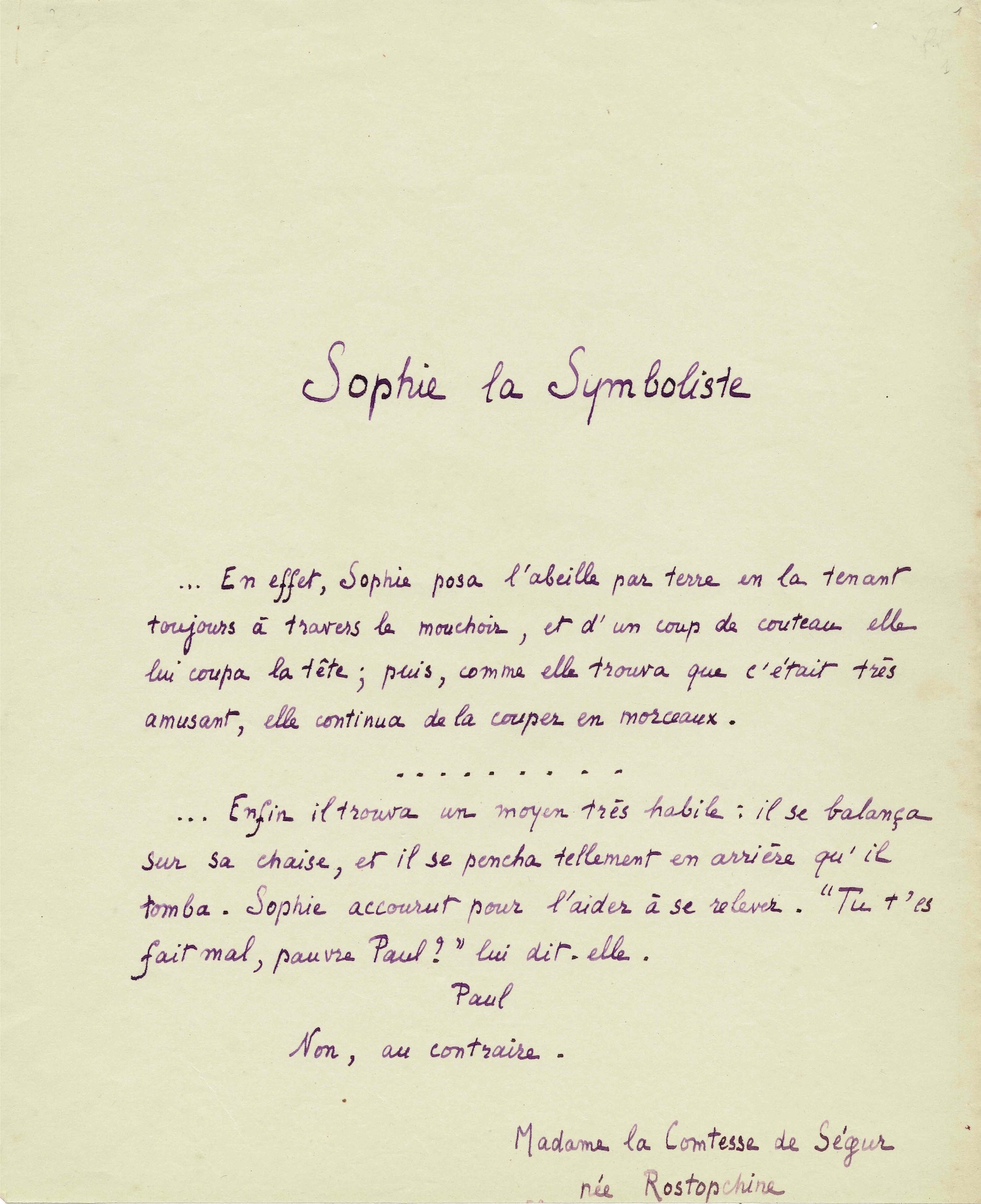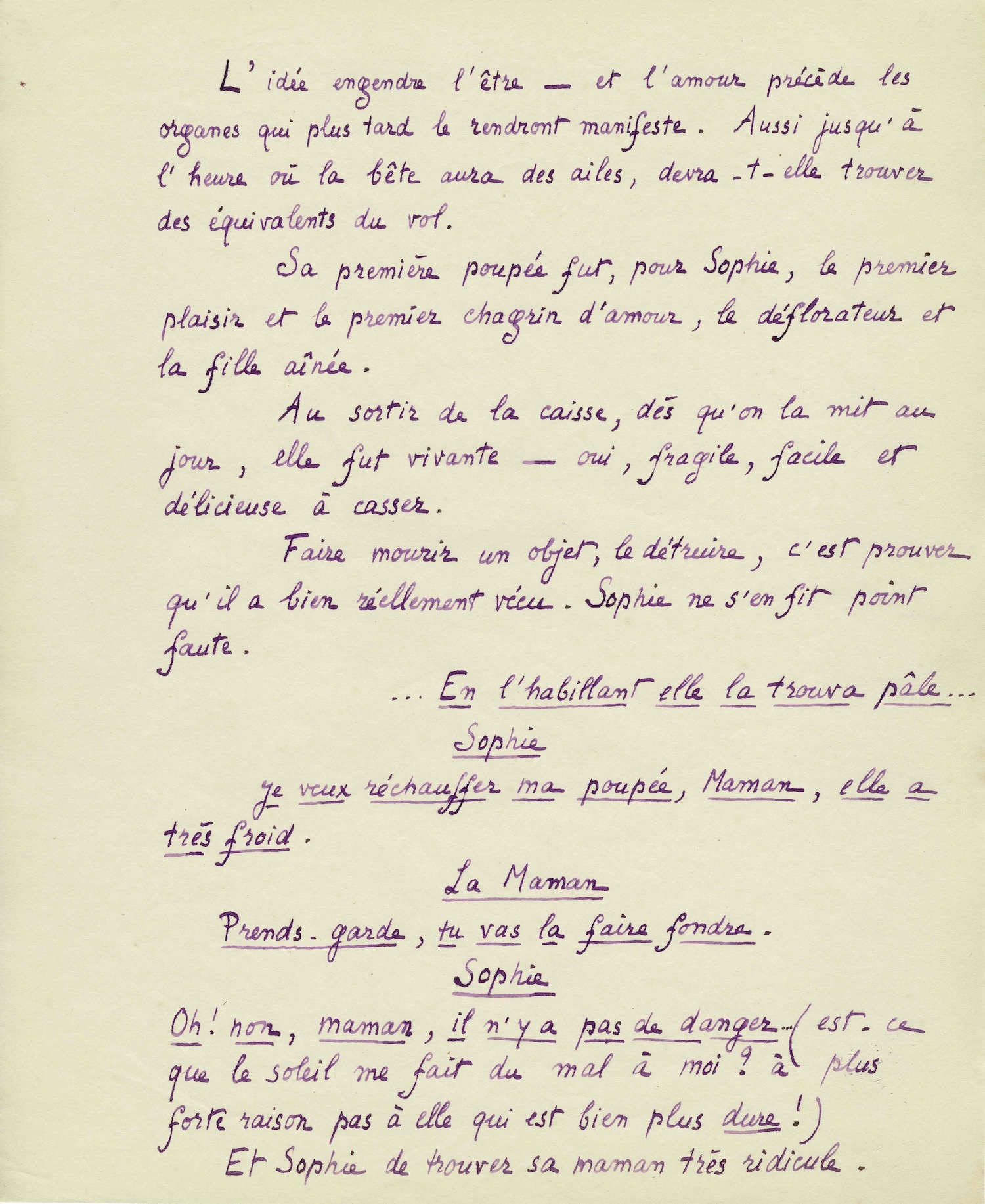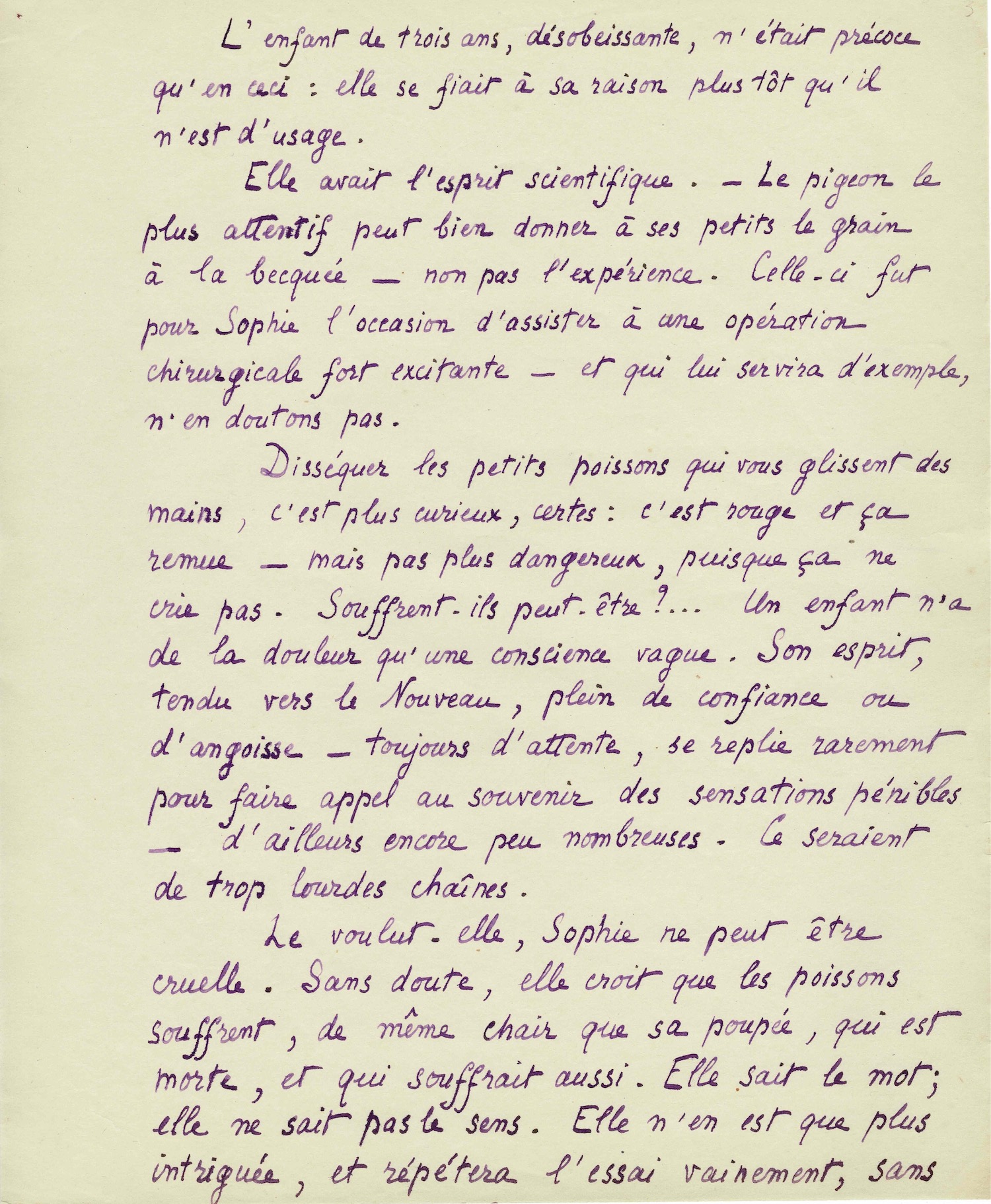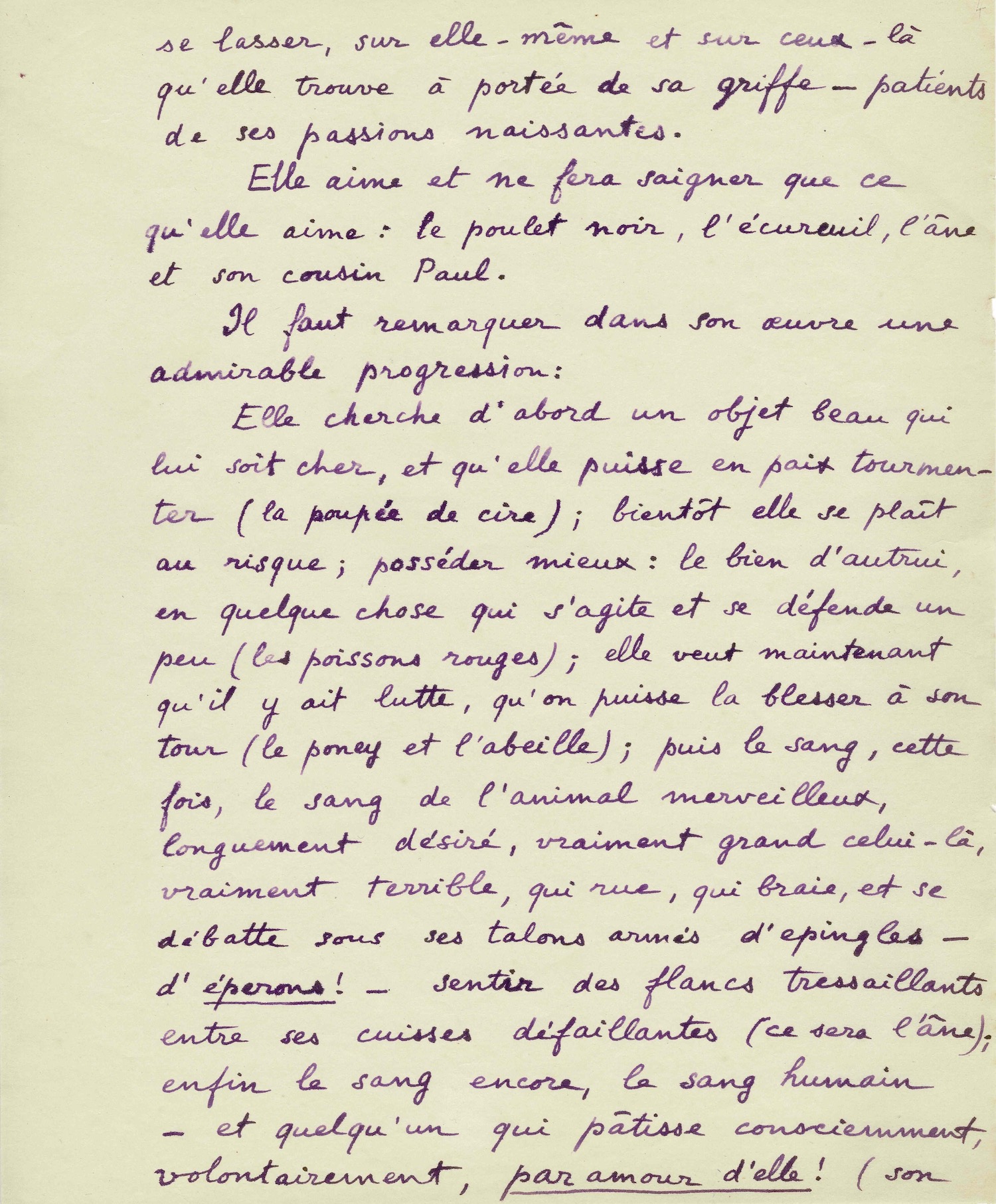Lucy Schwob known as Claude CAHUN (1894.1954)
Autograph manuscript signed – Sophie the Symbolist.
Five pages in-4° in purple ink. Signature crossed out. Slnd [circa 1920]
“Before the age of five we had exhausted all the games of love: when we started with the symbol we had little taste for the thing. »
Very rare manuscript by Claude Cahun – entitled Sophie la symboliste – twisting as she pleases the mythical character of the Countess of Ségur, Sophie de Réan.
Between 1920 and 1924, Cahun reconsidered the destinies of several mythical female characters, such as Judith, Eve, Delilah, Sappho, Salomé, etc. In the form of modernist tales, while appealing to tradition, Cahun transformed these female figures into modern and free women. Sophie la symboliste appeared, during the author's lifetime, in the Literary Journal (n°45) of February 28, 1925, then was published in the collection Héroines bringing together all of Cahun's texts on said female figures.
_____________________________________________________
Sophie the Symbolist
… In fact, Sophie placed the bee on the ground, still holding it through the handkerchief, and with a stab of the knife she cut off its head ; then, as she found it very amusing, she continued to cut it into pieces.
……………..
…. Finally he found a very clever way: he rocked on his chair, and leaned so far back that he fell. Sophie ran over to help him get up. “did you hurt yourself, poor Paul? » she told him.
Paul
No, it's the opposite.
Madame la Comtesse de Ségur née Rostopchine.
The idea generates being – and love precedes the organs which will later make it manifest. So until the time when the beast has wings, it will have to find equivalents of flight.
Her first doll was, for Sophie, the first pleasure and the first heartache, the deflowerer and the eldest daughter. When it came out of the crate, as soon as it was brought to light, it was alive – yes, fragile, easy and delicious to break.
To make an object die, to destroy it, is to prove that it really lived. Sophie was not at fault.
……………..
……………..
She loves and will only bleed what she loves : the black chicken, the squirrel, the donkey and her cousin Paul. An admirable progression should be noted in his work:
She first looks for a beautiful object that is dear to her, and that she can torment in peace (the wax doll); soon she delights in risk; possess better: the property of others, in something that moves and defends itself a little (goldfish); she now wants there to be a fight, so that we can hurt her in turn (the pony and the bee); then the blood, this time, the blood of the wonderful animal, long desired, truly great, truly terrible, which kicks, which brays, and struggles under its heels armed with pins – spurs! – feel quivering sides between his failing thighs (it will be the donkey); finally blood again, human blood – and someone who suffers consciously, voluntarily, for love of her ! (his cousin Paul, his innocent accomplice).
When Sophie, at twenty, finds Paul again, no longer the little boy who charmed her, sometimes flattering, sometimes blaming and serving her ideas, but a man, who took into their misfortunes so sweet only a banal desire for marriage - we understand his indifference!
PAUL.
Are you no longer interested in me?
SOPHIE
Before the age of five we had exhausted all the games of love: when we started with the symbol we had little taste for the thing.
_____________________________________________________
Eight “heroines” were published during Cahun's lifetime: Eve, Dalila, Judith, Hélène, Sapho, Marguerite, Salomé (in the Mercure de France on February 1, 1925 ), then Sophie (in the Journal littéraire on February 25, 1925).
Six other texts remained unpublished until 2006 and the publication of the collection Heroines: Penelope, Mary, Cinderella, the essential wife, Salmacis, and the one who is not a hero.
Heroines. Thousand and One Nights Editions. 2006. Under the direction of François Leperlier.

